The Best Place to See the Solar Eclipse: Top Viewing Locations for 2026
The Best Place to See the Solar Eclipse: Top Viewing Locations for 2026
A rare celestial event is on the horizon, and it’s one that eclipse chasers around the world have been eagerly anticipating.
On August 12, 2026, a total solar eclipse will cast its shadow across the Arctic, Greenland, Iceland, the Atlantic Ocean, and northern Spain, offering front-row seats to one of nature’s most dramatic displays.
So, put away your ordinary sunglasses and prepare your solar eclipse glasses as a form of proper eye protection, ready to get an unmissable view of the eclipsed sun.
Ready to witness the sky go dark in one of the world’s most extraordinary settings? Keep reading to explore the best places to catch the 2026 total solar eclipse — and discover how to turn this rare celestial event into the journey of a lifetime.
Find out more about the 2026 solar eclipse with National Geographic
What is a Solar Eclipse?
.jpg) Solar eclipse at totality. Credit: National Eclipse
Solar eclipse at totality. Credit: National Eclipse
The 2026 eclipse is part of the centuries-old Saros 126 cycle, and it promises to be one of the most anticipated eclipse events of the decade - an unforgettable spectacle for both casual viewers and dedicated eclipse chasers.
But, what is a solar eclipse?
When the moon completely covers the sun, revealing the sun’s corona, the result is an awe-inspiring transformation of the sky - a moment that turns day into night. Whether you’re an avid eclipse chaser or just looking for a unique way to experience this extraordinary moment, there are a number of incredible locations where the eclipse will be visible in its totality.
When and Where Will the 2026 Solar Eclipse Be Visible?
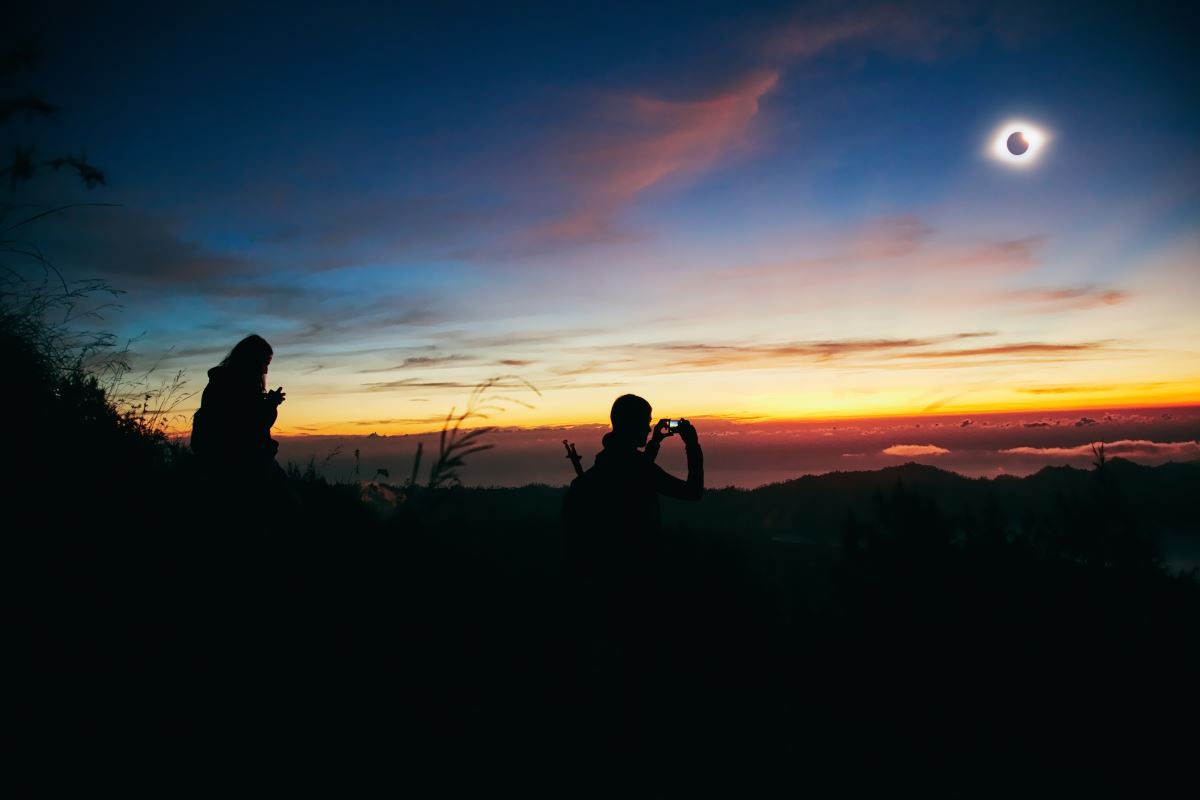 Photographers taking pictures of the solar eclipse
Photographers taking pictures of the solar eclipse
Mark your calendars: the total solar eclipse on August 12, 2026, is set to be one of the most anticipated celestial events of the decade, thanks to its rare trajectory across Europe and the North Atlantic.
Beginning in the late afternoon over eastern Greenland, the eclipse path sweeps south over the Arctic Ocean, touches the north coast of Iceland, and travels across northern Spain — including the Ebro River region and Balearic Islands — before concluding over the Mediterranean coast.
For the best experience of totality, you’ll need to be within the narrow ribbon across Earth’s surface where the moon completely covers the sun. Outside this path, much of mainland Europe will still witness a dramatic partial eclipse, especially in areas with clear skies and minimal cloud cover.
To pinpoint where the maximum eclipse will be visible, we recommend consulting an up-to-date eclipse map closer to the event.
Best Places to Watch the 2026 Solar Eclipse
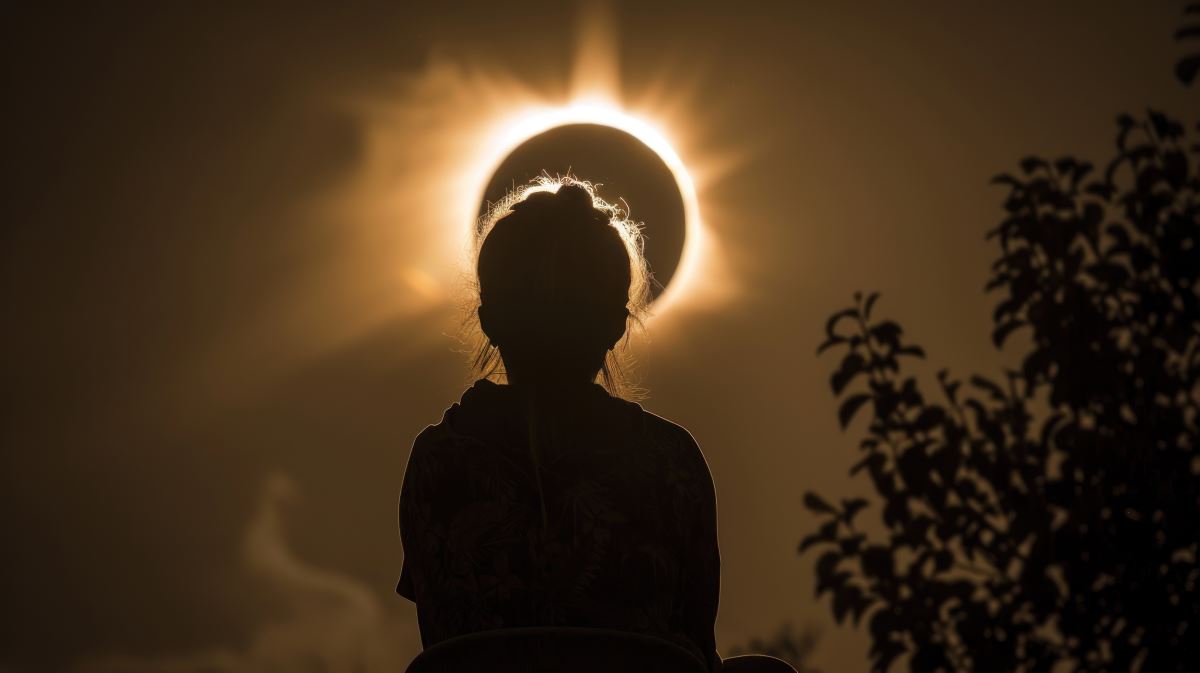 Person watching the solar eclipse
Person watching the solar eclipse
Choosing the best place to see the eclipse on August 12, 2026, depends on a mix of factors, including weather, light pollution, and how long the total phase will last.
However, we know the best places to see the solar eclipse are those that combine breathtaking scenery with optimal eclipse viewing conditions — and from Iceland’s volcanic coastlines to Greenland’s icy fjords and Spain’s sun-drenched hillsides, there’s no shortage of unforgettable vantage points along the path of totality.
Iceland
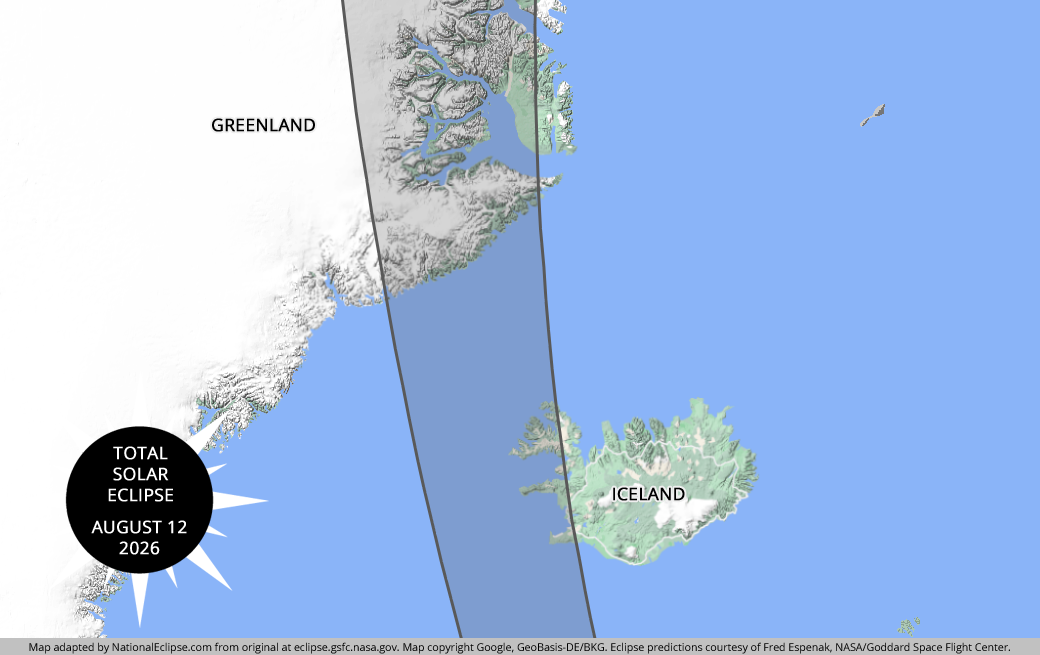 Eclipse map across Iceland. Credit: National Eclipse
Eclipse map across Iceland. Credit: National Eclipse
Iceland, more specifically Western Iceland stands out as one of the best places to witness this phenomenon, offering unique landscapes and optimal viewing conditions, both on land and at sea. Its western regions fall within the path of totality, with some locations experiencing over two minutes of total eclipse.
For a more dramatic and remote experience, western Iceland, especially the Snæfellsnes Peninsula, offers an awe-inspiring stage of black sand beaches, glaciers, and volcanic peaks — all under the shadow of a totally eclipsed sun. With durations of totality lasting over two minutes in some locations, Iceland offers an unparalleled eclipse experience.
Planning Your Iceland Trip for the 2026 Total Solar Eclipse
West Iceland & Reykjavik Solar Eclipse Group Tour
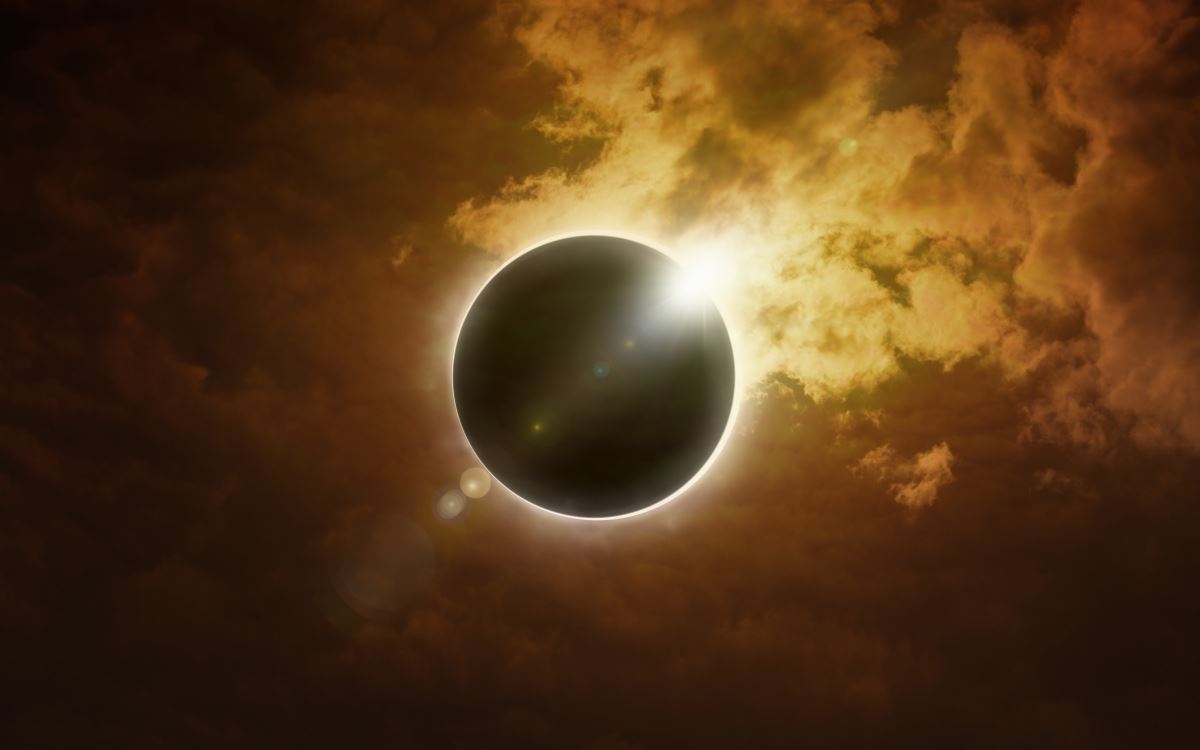 Solar eclipse
Solar eclipse
Join our West Iceland & Reykjavík Solar Eclipse Group Tour for an expertly guided experience of the 2026 total solar eclipse.
Positioned within Iceland's path of totality, this tour offers prime viewing opportunities amidst the country's stunning western landscapes. Beyond the eclipse, you'll explore iconic sites such as the Snæfellsnes Peninsula and Þingvellir National Park, all while enjoying the camaraderie of a small group setting. With comfortable accommodations and knowledgeable guides, this journey combines celestial wonder with the natural beauty and rich culture of Iceland.
West Iceland & Reykjavik Solar Eclipse Small Group Tour
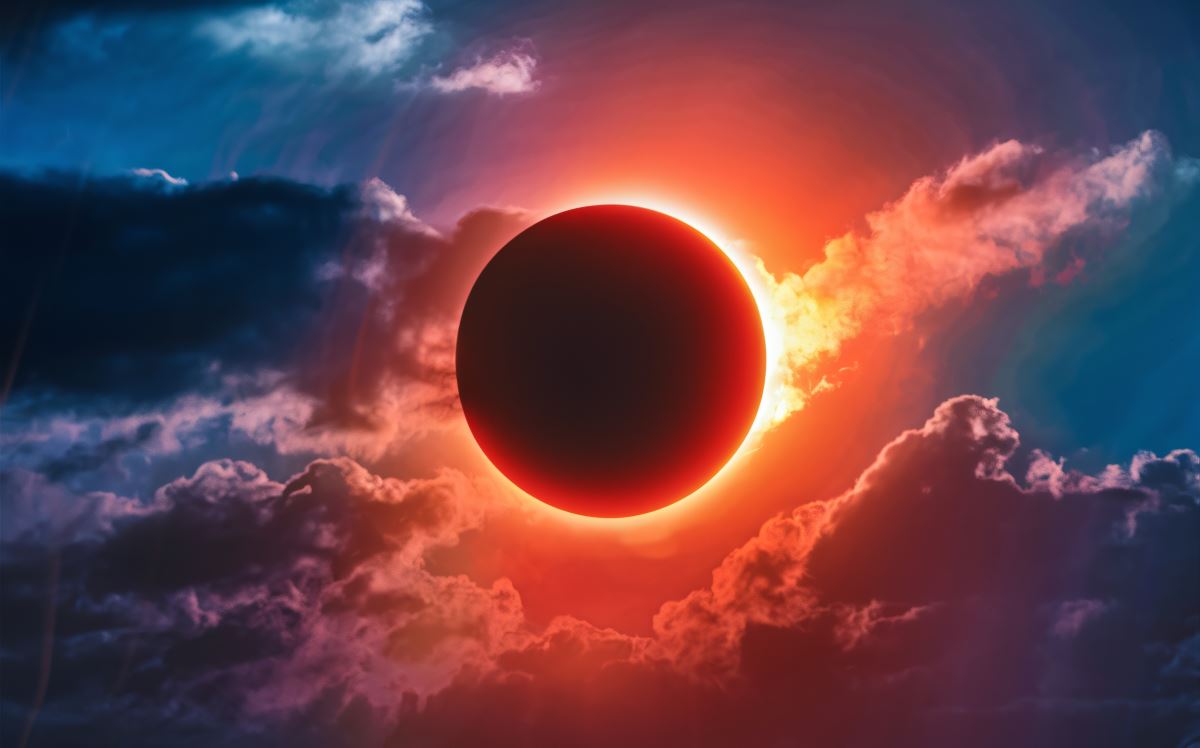 Colourful solar eclipse
Colourful solar eclipse
Embark on an intimate journey through Iceland's western wonders with our West Iceland & Reykjavík Solar Eclipse Small Group Tour.
Limited to a small number of participants, this eight-day adventure offers a personalised experience as you explore iconic sites like the Snæfellsnes Peninsula, the Golden Circle, and the Blue Lagoon. On August 12, 2026, you'll witness the total solar eclipse from a prime location within the path of totality, ensuring an unforgettable celestial spectacle. With expert guides, comfortable accommodations, and immersive cultural experiences, this tour seamlessly blends natural beauty with the awe of the eclipse.
Greenland
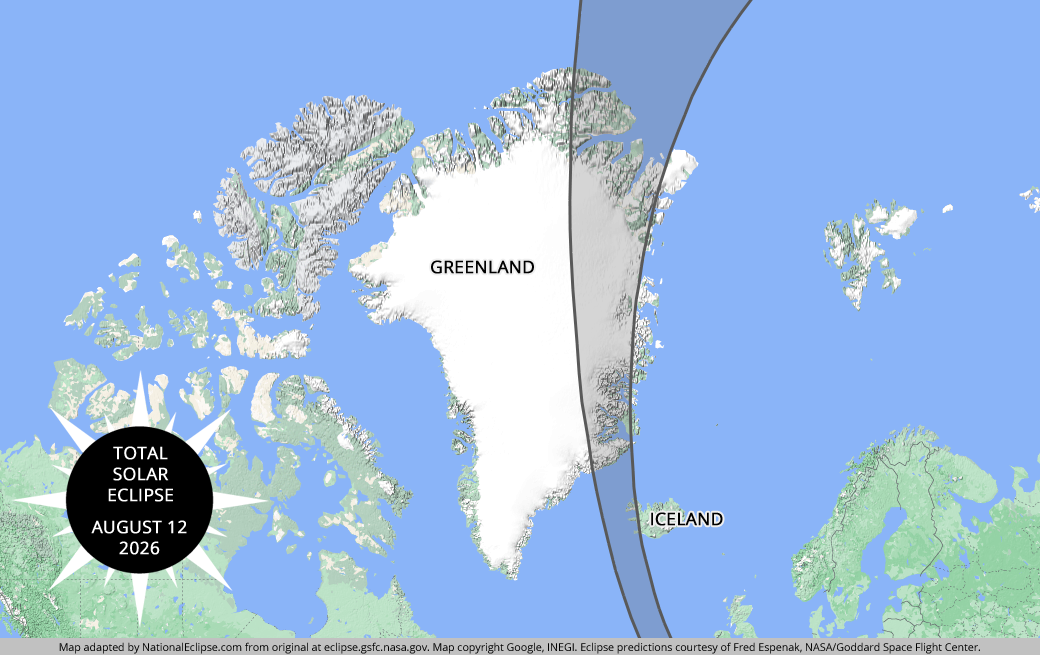 Eclipse map across Greenland. Credit: National Eclipse
Eclipse map across Greenland. Credit: National Eclipse
Eastern Greenland offers a dramatic and secluded vantage point for the 2026 total solar eclipse. As one of the first landmasses along the eclipse path, Greenland will witness the totality phase earlier in the day, with the moon completely covering the sun high over the Arctic landscape.
The region’s remote tundras, ice-covered fjords, and expansive skies offer minimal light pollution, making it an ideal place to witness the sun’s corona glowing in stark contrast against the untouched wilderness.
While the weather can be unpredictable and cloud cover is always a consideration, those lucky enough to experience clear skies will enjoy a truly rare celestial event few others on Earth will see in such pristine surroundings.
Keep in mind that reaching Greenland requires advanced planning and specialised logistics, but the reward is immense — a once-in-a-lifetime moment under a totally eclipsed sun, far from any crowds. For the most immersive experience, consider joining an Arctic expedition cruise that sails along Greenland’s eastern coast during eclipse season.
Mediterranean Coast
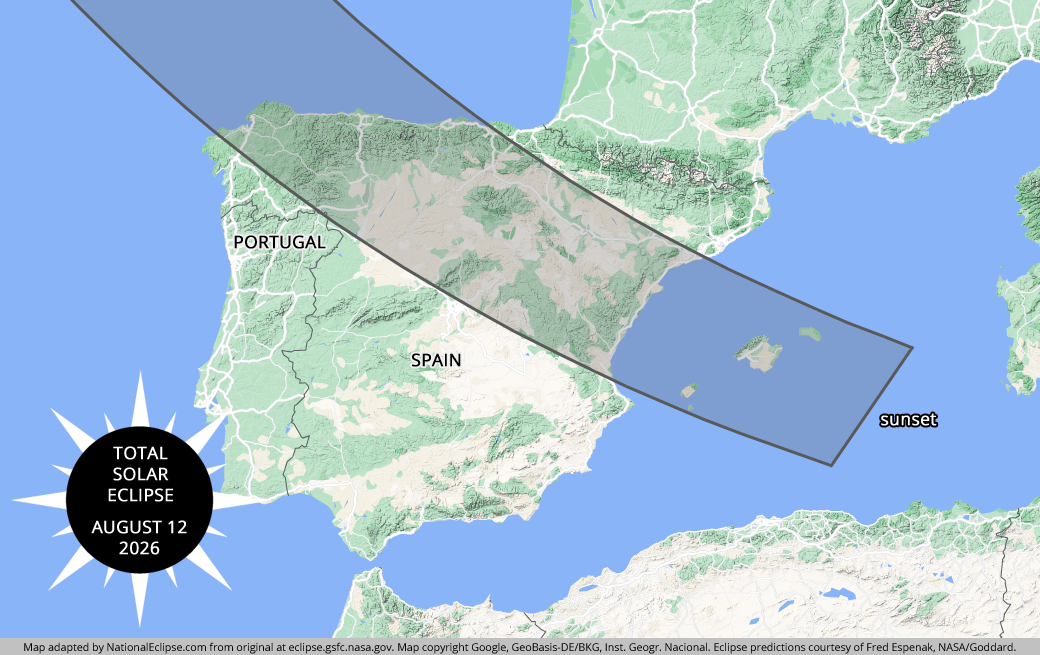 Eclipse map across Portugal and Spain. Credit: National Eclipse
Eclipse map across Portugal and Spain. Credit: National Eclipse
Some of the most promising locations along the solar eclipse 2026 path of totality include northern Spain, where cities like A Coruña, Zaragoza, and Valencia offer ideal eclipse viewing spots combined with urban comforts.
The Ebro River region, with its elevated terrain and low light pollution, is particularly well-suited for capturing the eclipsed sun.
Over in the Balearic Islands, viewers can witness a stunning partial eclipse transitioning into totality just before sunset, with places like Sant Elm on Mallorca providing a magical view of the sun dipping below the western horizon.
Solar Eclipse 2026: Frequently Asked Questions
What is the best way to safely watch a solar eclipse?
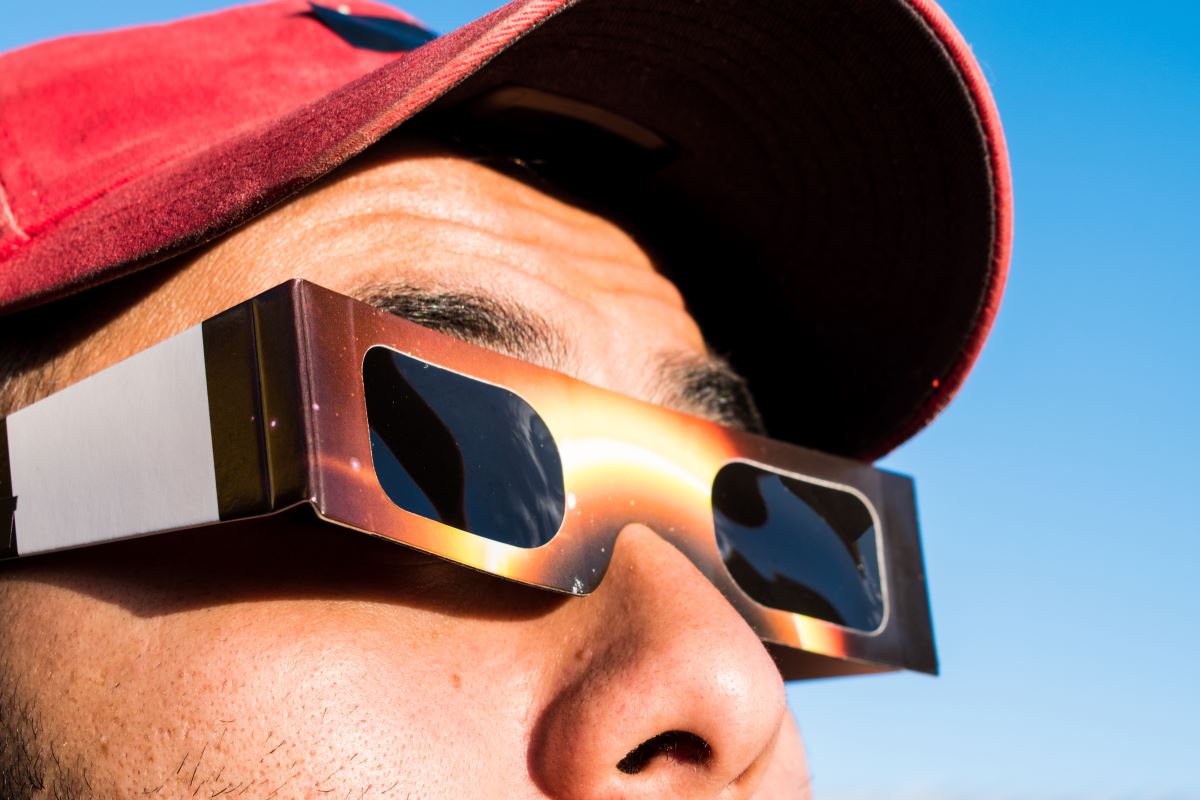 Solar eclipse glasses
Solar eclipse glasses
To safely enjoy a solar eclipse — whether it’s a partial eclipse or a total solar eclipse — it’s essential to use proper eye protection. That means wearing certified solar eclipse glasses (not ordinary sunglasses) that meet ISO 12312-2 standards.
During the brief totality phase, when the moon completely covers the sun, it’s safe to look at the eclipsed sun directly — but only for those few moments of total eclipse. Never try to view a solar eclipse using homemade filters or binoculars without specialised solar filters.
What is the totality path of the eclipse 2026?
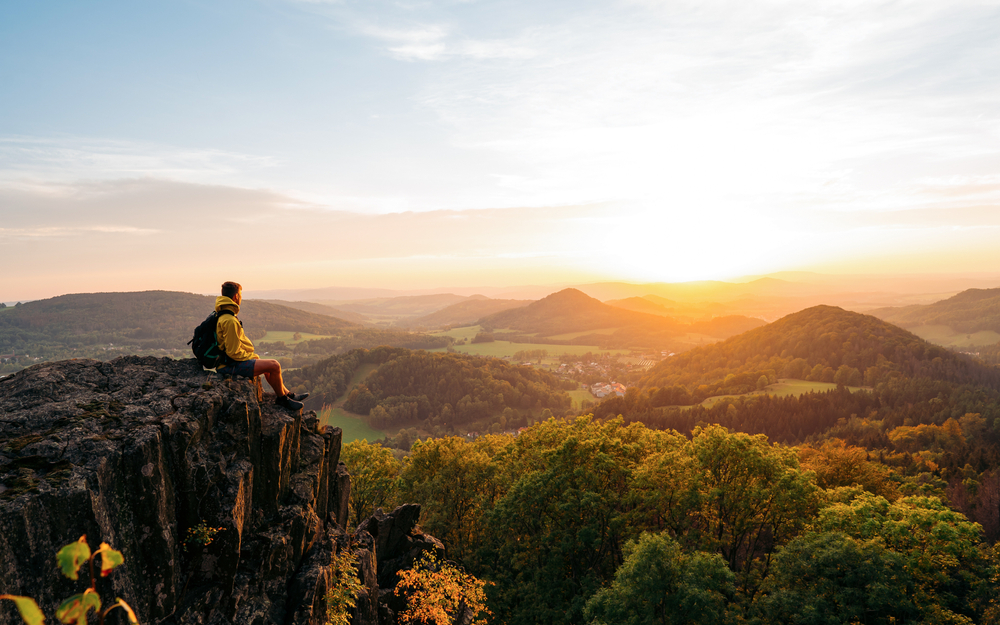 Traveller waiting to watch the solar eclipse in the Nordics
Traveller waiting to watch the solar eclipse in the Nordics
The 2026 total solar eclipse will embark on a spectacular journey, starting at the North Pole and travelling across the Arctic Ocean. It will then pass over eastern Greenland and western Iceland before continuing its path over the Atlantic, touching northern Spain and the Balearic Islands, and finally concluding along the Mediterranean coast.
Those within the narrow path of totality will witness a total eclipse, where the moon's orbit perfectly aligns with the sun, revealing its corona. For viewers outside this path, much of mainland Europe will experience only a partial eclipse.
Will the UK see the 2026 eclipse?
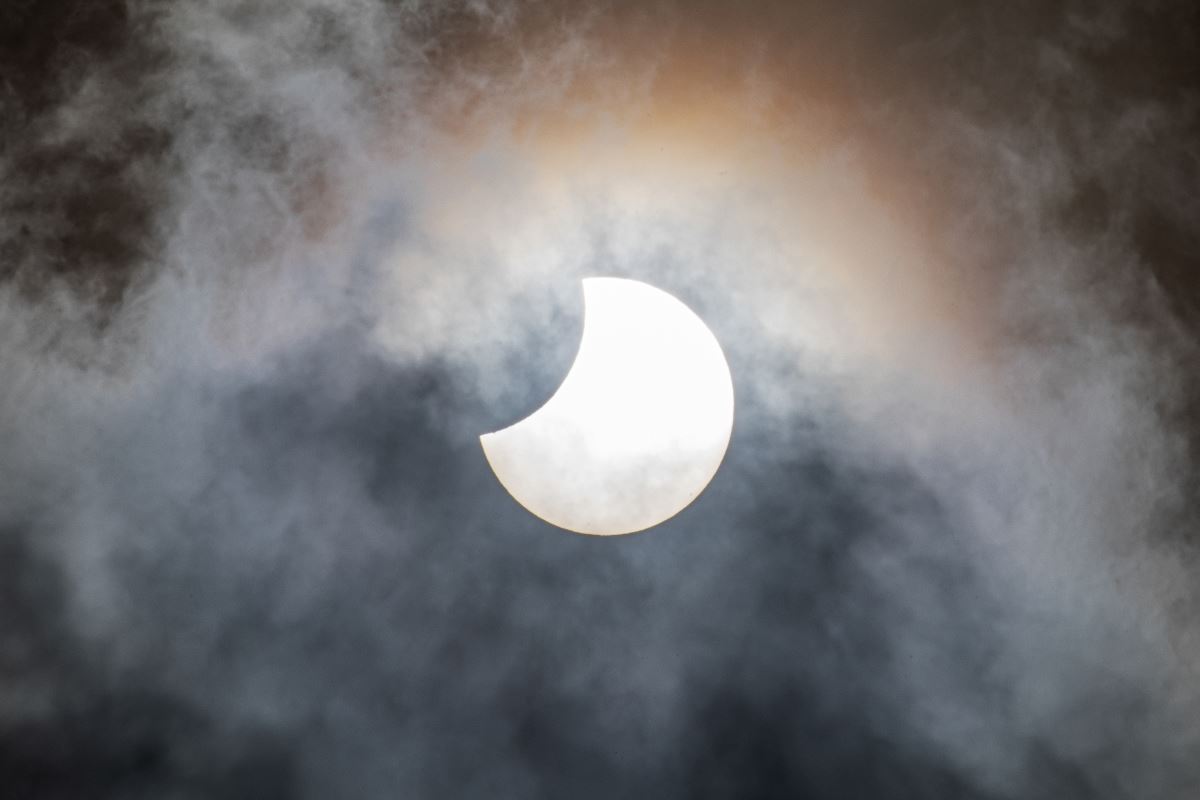 Partial eclipse
Partial eclipse
While the UK won’t be in the path of totality, most of the country will witness a significant partial solar eclipse on August 12, 2026.
In places like the north east, the eclipse will be visible in the late afternoon, depending on local time and cloud cover. Though it won't be a total eclipse, the sky will darken noticeably, offering a rare opportunity for skywatchers to observe one of the most exciting eclipse events of the decade.
Where will the 2027 solar eclipse be visible?
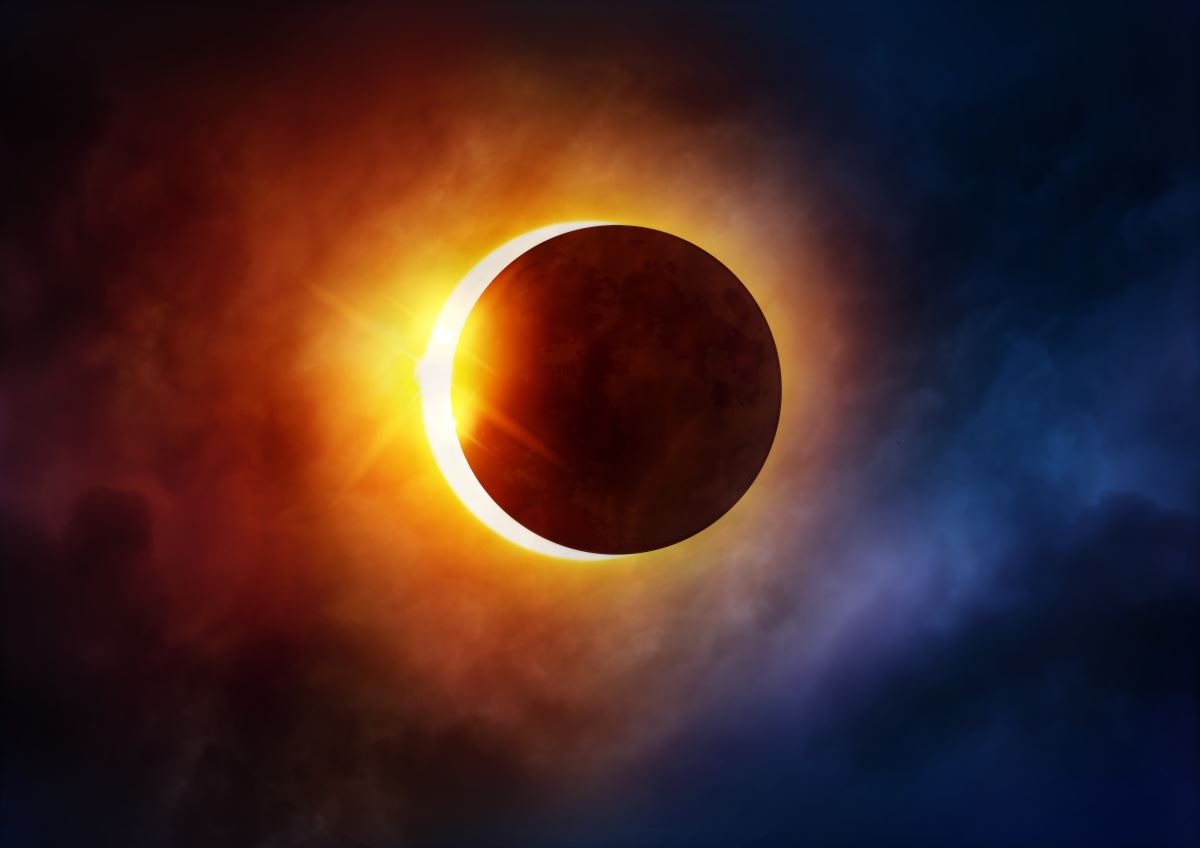 Solar eclipse on a cloudy night
Solar eclipse on a cloudy night
The 2027 total solar eclipse will offer an even longer duration of totality than 2026, and it will be visible across parts of northern Africa, including Egypt and Morocco, as well as southern Europe and the Middle East.
Eclipse chasers seeking the best place to see the eclipse should look for locations along the path of totality with clear skies and minimal cloud amounts. This rare celestial event is part of eclipse season, and like all lunar eclipses and solar eclipses, it aligns with the ascending node of the moon’s orbit around Earth.
Speak to Regent’s Travel Specialists About Your 2026 Eclipse Trip
Ready to turn a fleeting moment of celestial magic into the highlight of your travel year? Whether you dream of watching the sun vanish above Iceland’s volcanic plains, from the deck of an Arctic expedition vessel off Greenland, or as it dips behind the mountains of northern Spain, our travel specialists can help craft the perfect eclipse adventure for you.
From small-group tours to tailor-made trips in prime viewing locations, we’ll make sure you’re exactly where you need to be when the sky goes dark.